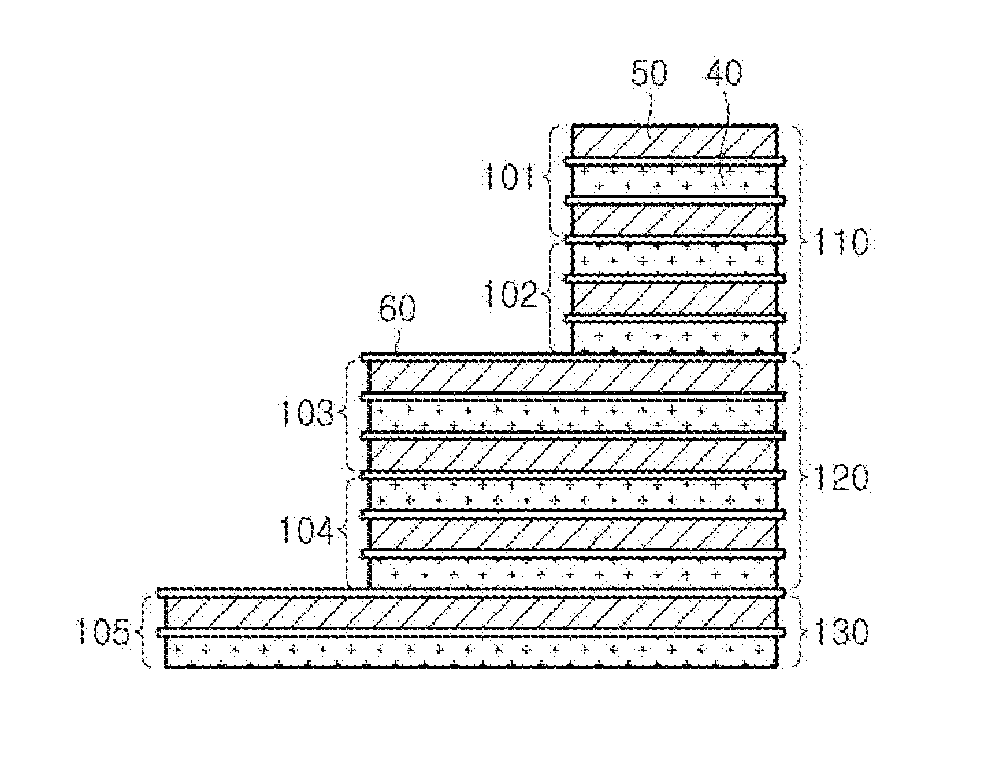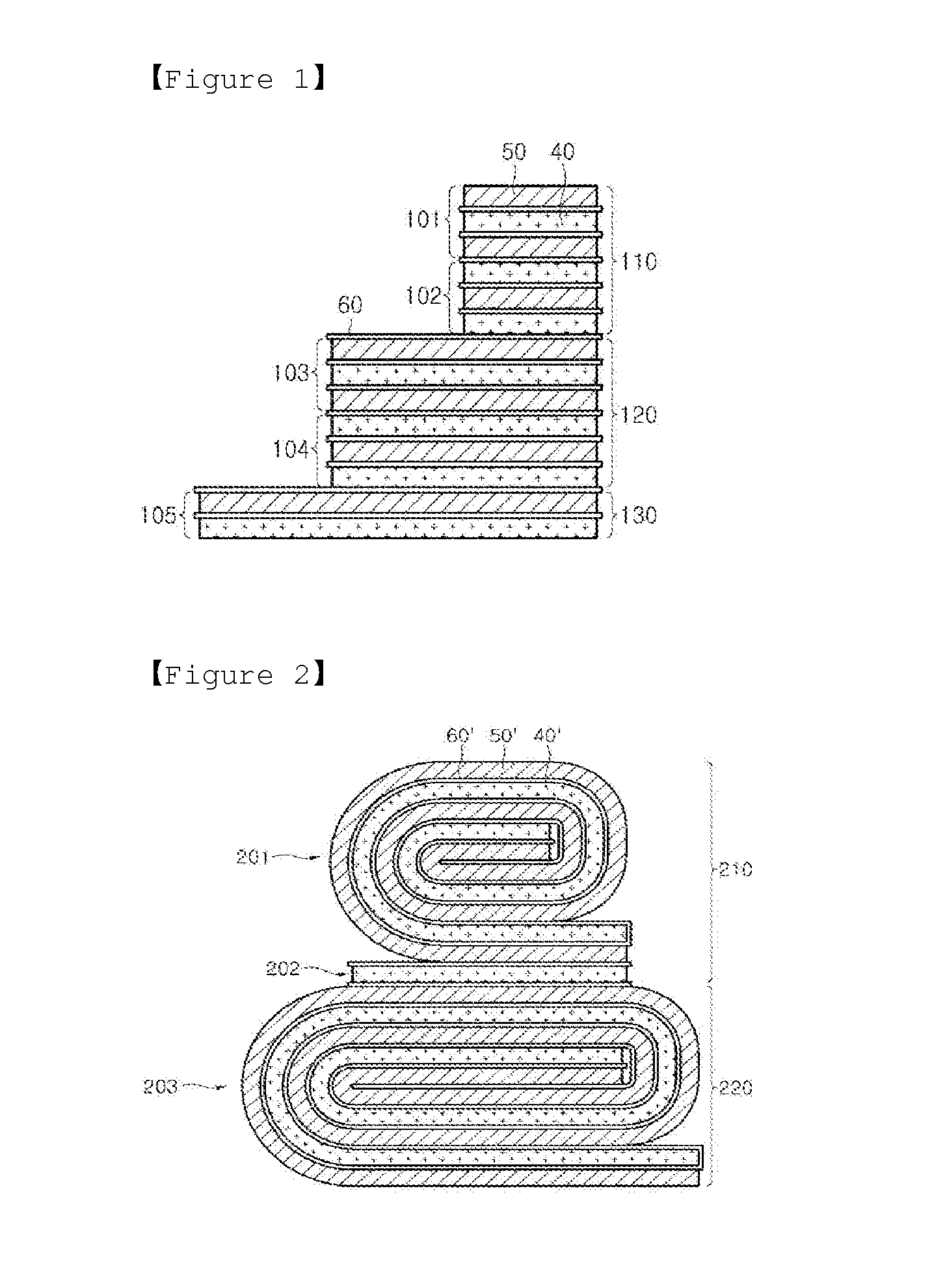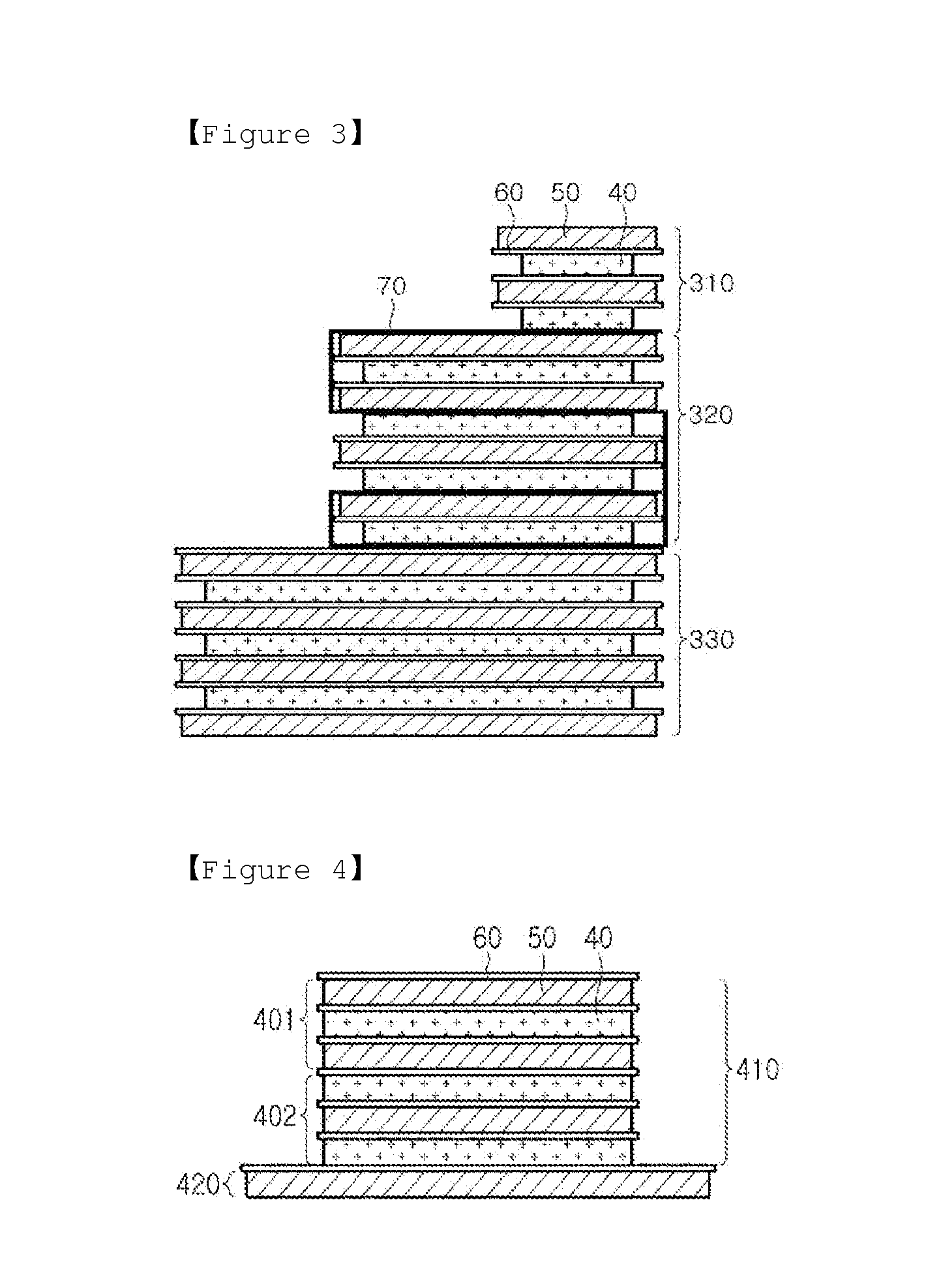Stepped electrode assembly having predetermined a reversible capacitance ratio in the interface between electrode units, battery cell and device comprising the same
a technology of stepped electrodes and electrode units, which is applied in the direction of batteries, wound/folded electrode electrodes, sustainable manufacturing/processing, etc., can solve the problems of limited design freedom, large design restrictions, and degrading a degree of shape freedom, so as to maintain the capacitance characteristic and durability characteristic, the design freedom is very superior, and the effect of dead spa
- Summary
- Abstract
- Description
- Claims
- Application Information
AI Technical Summary
Benefits of technology
Problems solved by technology
Method used
Image
Examples
manufacturing example 1
Positive Electrode A
[0155]LiCoO2 was used as a positive electrode active material and polyvinylidene fluoride (PVDF) was used as a binder, the positive electrode active material and the binder were dissolved in N-methyl-2-pyrrolidone (NMP) and then mixed to prepare a positive electrode paste. The positive electrode paste was coated on both surfaces of an aluminum foil collector having a thickness of 15 μm, dried in an oven at 150° C., and pressed to manufacture a positive electrode A. The manufactured positive electrode A had a thickness of 100 μm, a porosity of 21%, and a reversible capacitance of 335 mAh.
manufacturing example 2
Positive Electrode B
[0156]A positive electrode B was manufactured using the same method as that in Manufacturing Example 1 except that the thickness of the positive electrode became 110 μm. The manufactured positive electrode B had a thickness of 110 μm, a porosity of 21%, and a reversible capacitance of 375 mAh.
manufacturing example 3
Negative Electrode A
[0157]A blend material of natural graphite and artificial graphite was used as a negative electrode active material, and styrene-butadiene rubber (SBR) and carboxymethyl cellulose (CMC) carbon were used as a binder. The negative electrode active material and the binder were dissolved in distilled water and mixed to prepare a negative electrode paste. After the negative electrode paste thus obtained was coated on both surfaces of a copper foil collector having a thickness of 10 μm, the copper foil collector coated with the paste was thermally treated in an oven at 100° C., and pressed to manufacture a negative electrode A. The manufactured negative electrode A had a thickness of 105 μm, a porosity of 27%, and a reversible capacitance of 348 mAh.
PUM
| Property | Measurement | Unit |
|---|---|---|
| voltage | aaaaa | aaaaa |
| porosity | aaaaa | aaaaa |
| areas | aaaaa | aaaaa |
Abstract
Description
Claims
Application Information
 Login to View More
Login to View More - R&D
- Intellectual Property
- Life Sciences
- Materials
- Tech Scout
- Unparalleled Data Quality
- Higher Quality Content
- 60% Fewer Hallucinations
Browse by: Latest US Patents, China's latest patents, Technical Efficacy Thesaurus, Application Domain, Technology Topic, Popular Technical Reports.
© 2025 PatSnap. All rights reserved.Legal|Privacy policy|Modern Slavery Act Transparency Statement|Sitemap|About US| Contact US: help@patsnap.com



